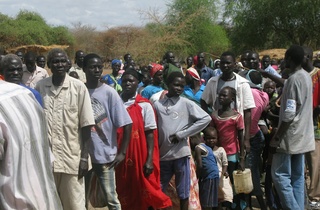“Between 22,000 to 40,000 people are so far reported displaced or on the move from the Kodok area on the West Bank of the White Nile River. Many families continue to cross the border to Sudan in search of safety, while others flee south towards the State Capital, Malakal where more than 2600 (and rising everyday) additional people have sought protection following years of violence and instability in the region,” the United Nations Office for the Coordination of Humanitarian Affairs (OCHA) said.
The humanitarian situation in South Sudan remains dire. Some 8.3 million people or more than two-thirds of the population need some form of humanitarian assistance and protection in 2021, as the country continues to experience the cumulative effects of years of conflict, a surge in sub-national violence, unprecedented flooding, and hyperinflation, further compounded by the COVID-19 pandemic.
The lack of durable peace and limited investment in basic services impedes many people’s ability to move towards sustainable development.
South Sudan remains one of the most severe protection crises in the world with high levels of GBV and reports of significant gross human rights violations across the country. Some 1.7 million people remain internally displaced.
Another 2.3 million South Sudanese refugees have fled to neighboring countries and, despite modest improvements in the political and security situation, do not yet consider it safe to return home in large numbers. The country is now facing its highest levels of food insecurity and malnutrition since its independence 10 years ago.
An estimated 1.4 million children and 480,000 pregnant or lactating women will be acutely malnourished and in need of treatment. The COVID-19 pandemic has aggravated people’s existing vulnerabilities and weakened an already fragile health system’s ability to treat people. (ILKHA)



 Dünya
Dünya
 Dünya
Dünya
 Güncel
Güncel
 Dünya
Dünya
 Dünya
Dünya
 Dünya
Dünya
 Dünya
Dünya
 Dünya
Dünya
 Dünya
Dünya
 Güncel
Güncel





